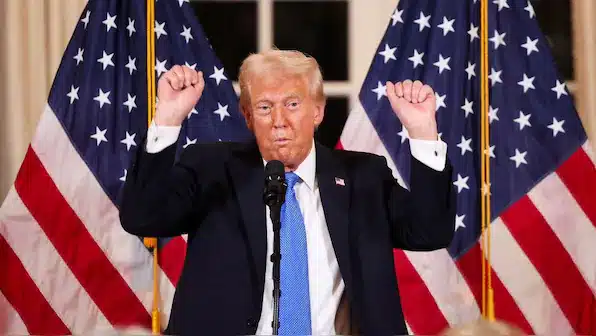Donald Trump Signs Executive Order for Tariffs Up to 41% Amid Trade War: Key Insights

US President Donald Trump has enacted a significant executive order that raises tariffs on a range of key trading partners worldwide. The new tariff rates, which vary from 41% on Syria to 35% on Canada, are set to take effect on August 7. This move is part of the administration’s strategy to address long-standing trade deficits, which officials argue have negatively impacted the U.S. economy and national security.
Details of the New Tariff Regime
The executive order establishes tariff rates for 68 countries and the 27-member European Union, introducing a default baseline tariff of 10%. Countries with a trade deficit with the United States will now face a minimum tariff of 15%, affecting approximately 40 nations globally. The rates are determined based on each country’s trade gap with the U.S. and their economic standing in their respective regions. While the 15% tariff serves as the new standard for countries with trade deficits, several nations will experience much higher tariffs due to their failure to negotiate new trade terms with the U.S. or because they have the largest trade deficits.
Among the most affected countries, Syria will face the steepest tariff at 41%. Laos and Myanmar will see tariffs of 40%, while Switzerland’s tariffs will rise to 39%. Iraq and Serbia will be subject to a 35% tariff, and several other nations, including Algeria, Bosnia and Herzegovina, Libya, and South Africa, will face a 30% tariff. Canada, previously subjected to a 25% tariff, will now see an increase to 35%, reflecting the U.S. administration’s broader efforts to realign trade relationships.
Impact on Mexico and Trade Agreements
In relation to Mexico, President Trump confirmed that goods entering the U.S. will still incur a 25% tariff, a rate he has loosely associated with issues surrounding fentanyl trafficking. Additionally, vehicles will continue to be taxed at 25%, while imports of copper, aluminum, and steel will face a 50% tariff during ongoing negotiations. Trump emphasized that Mexico must eliminate its “non-tariff trade barriers,” although he did not provide specific details on what these barriers entail.
Some products remain protected under the 2020 US-Mexico-Canada Agreement (USMCA), a trade deal that Trump secured during his first term. However, the President’s current stance appears less supportive of the agreement, which is scheduled for renegotiation next year. Earlier this year, he had already imposed new tariffs on both Mexico and Canada, marking one of his initial significant actions upon returning to office.
Implementation Timeline and Future Considerations
Although the new tariffs were initially expected to be implemented immediately, the White House has postponed their enforcement to August 7. This delay allows U.S. Customs and Border Protection to update its systems to accommodate the new duties. The executive order outlines the adjusted reciprocal tariffs for various countries, which will be crucial for businesses and trade partners as they navigate the changing landscape of U.S. trade policy.
The decision to raise tariffs is part of a broader strategy by the Trump administration to address perceived imbalances in international trade. As the global economy continues to evolve, the impact of these tariffs will likely be felt across various sectors, influencing trade dynamics and economic relationships between the U.S. and its partners. The administration’s focus on trade deficits suggests that further adjustments to tariffs and trade agreements may be forthcoming as negotiations progress.
Observer Voice is the one stop site for National, International news, Sports, Editor’s Choice, Art/culture contents, Quotes and much more. We also cover historical contents. Historical contents includes World History, Indian History, and what happened today. The website also covers Entertainment across the India and World.

